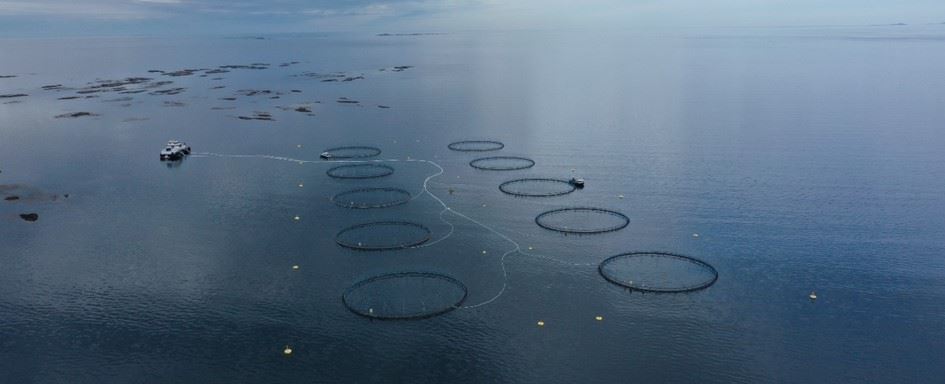Primary objective:
The aim of this project is to assess how and to what extent the environmental parameters and location/layout of the salmon cages affect welfare (behaviour, growth) and the health.
Secondary objectives:
- Map the fish welfare at cage level in farms.
- Map the variation of environmental parameters within the farms.
- Map the difference in behaviour of salmon from same group in a farm but in different cages.
The project will study representative cages under different physical location within a site and under different environmental exposure, stocked with the same group of fish. Emphasis will be on following the fish during the full production cycle. In addition to fish welfare, health indicators that will be followed (from farmer's fish health report) are e.g salmon lice concentrations, infectious diseases, wound development.The project will develop fundamental knowledge of production environments, fish behaviour, welfare and health in farming systems (skirt and without skirt) and locations using two case studies (exposed, open sea). The project will also provide knowledge about optimal farm layout for avoiding/reduce health diseases and/or increase welfare.
Results and Expected utility values:
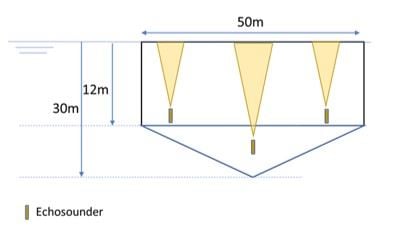
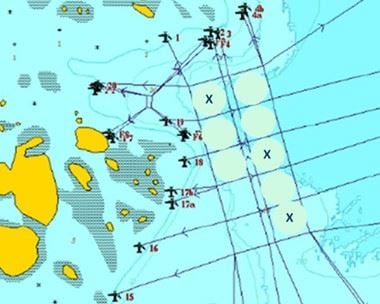
Long term measurements (currents, waves, fish behavior and welfare, algae detection) have been performed at different larges scale research facilities at SINTEF : the main results are:
- For these measurements: There were no significant differences in welfare between all the investigated cages. Fish avoid waves when it is possible, but this avoidance is mainly observed at the surface. If the cage is deformed due to high currents, the salmon will have to swim close to the surface and so the waves, but no bad welfare indicators have been registered.

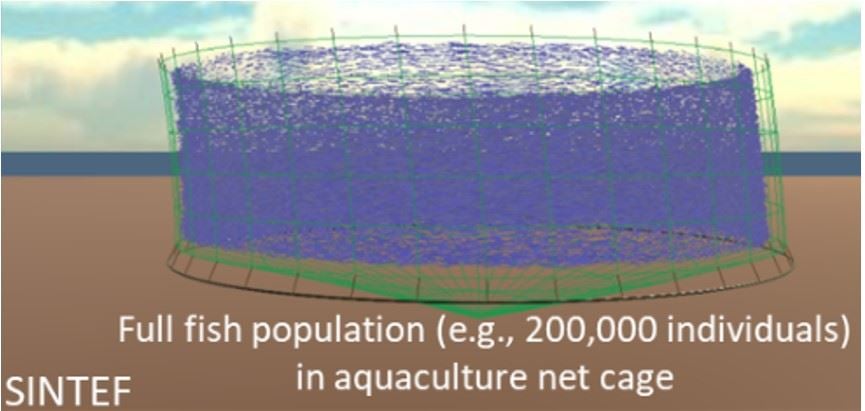
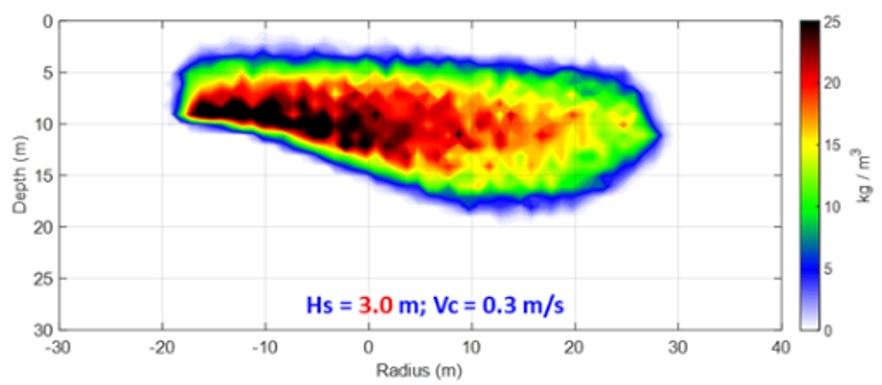
Simulated fish distributions (SINTEF) in a flexible sea cage with currents and waves. Colormap indicates directly the fish density (from 0-30kg/m3). A linear waves theory is used to define the avoidance of waves from fish.
- Difference in DO concentration between cages (especially those most exposed to currents in comparison to those in less exposed) and inside the skirt and under the skirt throughout production: the possible effect on growth and length needs to be investigated further?
- Typical coastal plankton community in terms of species and occurrences were monitored: Based on an assessment of the data, there are no major differences between the outside of cages and the inside of cages in terms of species composition, but there may be some difference in terms of numbers. Developed new molecular markers, which seem to be better than the older ones used for detection of algae based on DNA.

